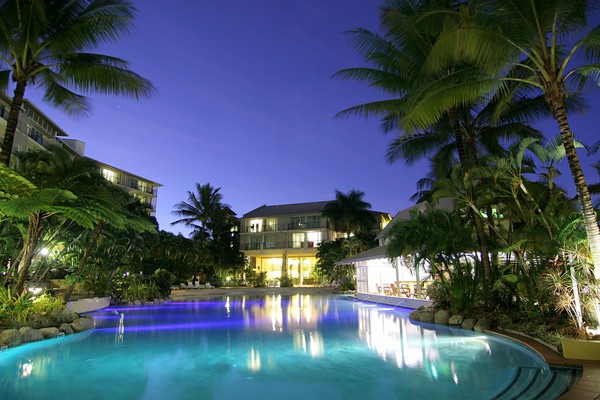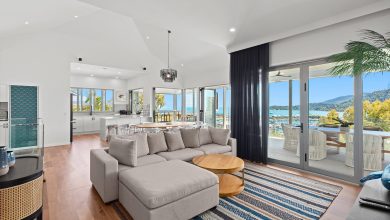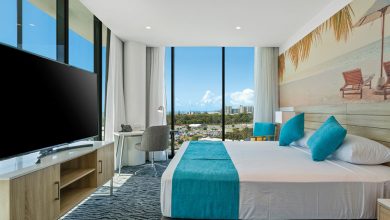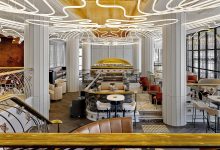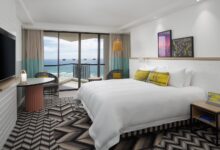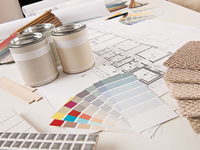
5 steps to a great colour scheme
Décor Colour schemes can be very personal and it is often a daunting task to know what to change, what colour scheme will last and what is serviceable in accommodation properties. So how do you tackle a Colour Scheme… where to start?
STEP 1 – Evaluate
Colour schemes for accommodation rooms should be done by professionals that know the industry, the products, the trends and your market.
Having said that, it is good to have an idea of what you are after before the industry specialists advise you, and often you may want to ‘freshen up’ your current rooms or you may just want to know that the advice your getting is correct. For whatever reason, the place to start is to evaluate the current room.
If you are thinking of doing a complete room refurbishment then your colour pallet is blank and you have a fresh start. If this is the case then other factors will determine your colour pallet. If you want to ‘freshen up’ your current scheme then it is the items that are remaining that will determine your whole scheme. If this is the case, make sure you are not sacrificing the overall outcome in order to save, for example, a bedspread that may be on it’s last legs anyway. Make sure you are not trying to freshen up with colours that are simply dated as it may make the rooms look better maintained but they will still look dated.
STEP 2 – Direction
The next step is to determine what direction you wish to take for your colour pallet. This should not be random nor should it be determined by what colours you like. Although it is hard to do, you have to remember the colour scheme is not for you and your home, it is not personal, it is for your guests.
To establish what direction to take you need to consider the demographic of your clientele, climate and your environment. Often this will dictate the colour pallet you use. For example if you have senior, mostly male corporate guests, then you probably want a colour scheme that is bold, sophisticated and neutral. If you have families then you may want something that is a little more bright and lively. Once you have considered your guests, then consider your climate and location ie; are you in a cold climate where you will want warmer colours in the rooms.
Or are you in a warm environment, perhaps near a beach where you will want to use cooler colours so your guests feel cool, relaxed and refreshed when they are in the rooms. You don’t want to use reds and oranges in a climate that is usually hot as it will seem warm and oppressive in the room even if it is physically cool.
Try not to be too typical. Everybody thinks of using blues near the beach.
However there are a lot of other colour pallets that will work with a beach theme. Think of the other elements around that are perhaps less typical and you may come up with a colour pallet that is individual to you such as lime green, or sandy colours, lemon and charcoal, cool fresh white with a splash of hibiscus pink.
STEP 3 – Design
Once you have decided on a general colour pallet, you next need to think about the design. What colours to use where and what fabrics to use?
This can be very daunting and where you should rely on your specialist.
A few areas that need consideration are; if your guests are families then be sure to use upholstery fabrics that can disguise stains such as dark or patterned fabrics. Regardless of your clientele, this should always be a consideration, as fabrics need to be serviceable and easily maintained above all else. Commercial heavy duty grade fabrics should be used.
When deciding where to use the colour in the room consider the following; the items that are going to last the longest, curtains, furniture, carpet and paint, should remain neutral, so the design will have longevity. Throw the colour into the items that can be more easily changed, such as throw cushions, bedding and upholstery. The overall look should be appealing, suit your property and clientele and be easily maintained.
STEP 4 – Consideration
When designing a complete colour scheme you need to consider all the areas of your room. We now know that the carpet and curtains are a neutral tone that blends with your pallet. The upholstery may be in your feature colour but also needs to have a texture or pattern. The bedding and throw cushions can be where your feature colour really is emphasised. However this is not the limit to where you can use the colour in you scheme.
You may wish to use the same colour in your throw cushions as in a print to reinforce the design, alternatively you can use a co-ordinating colour. If doing so, make sure there is a common design or colour that makes the design cohesive, otherwise it will look as though you have just randomly thrown colour around. For example you may use a blue on the cushion and a sand colour on the valance but to tie them together the upholstery could be a stripe in blue and sand. Other elements to blend or use colour can be a bed valance, bed runner, fabric lamp shade, decorative elements such as prints or wall art, desk or dining chair or an occasional tub chair. If your direction gets lost come back to basics and don’t overwork it.
STEP 5 – Check List
Once you have your direction and design stand back from your design, or even leave it for a week or two and come back to with fresh eyes and then go through this checklist. Is my concept…
– Simple and not unnecessarily complicated
– Suited to my guests
– Suited to my location and climate
– Cohesive in direction
– Have longevity and will not date
– All elements of the design and finishes blend together well
– Use commercial products and finishes at all times
After you have checked all this remember to listen to experts in the industry as they should have the knowledge to advise you. Look at other properties that present well to establish what it is that makes them work. Be decisive about what you are doing and have a clear direction before you begin purchasing or manufacturing anything so that on completion it reflects your initial design concept. If you are doing a full refurbishment or even a partial upgrade, industry fitout specialists should give design and colour advice inclusive as part of their service.

AccomNews is not affiliated with any government agency, body or political party. We are an independently owned, family-operated magazine.

